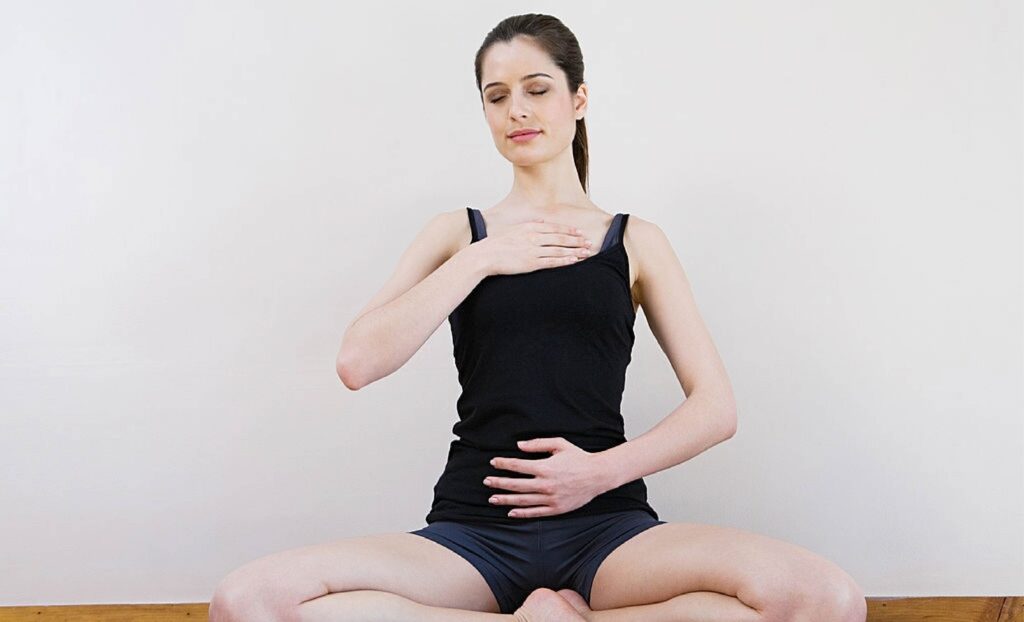Breath watching is the practice of controlling your breath in order to bring attention to your inner self and open yourself for self-improvement. It should also be noted that breath watching is often used in yoga and is known as mindful breathing.
One of the chief places where breath watching is most prevalent is during meditation. In order to do this, breathing is usually done in combination with music or sound cues. The effects of meditation on the psyche and overall health are quite positive. Let’s talk about those effects below.
Mindful Breathing: What Is It? How Is It Done?

Simply said, mindful breathing is all about voluntarily breathing in a specific manner in order to bring a sense of calmness and groundedness to yourself.
So, what is mindful breathing? Let’s go over that now.
Within yogic practices, the act of breathing is described as taking in life force or strength and as such, in practice, different forms of breathwork are used during different asanas or postures in order to gain benefits such as a better, calmer mood, higher energy and a whole host of other health benefits. While it is often related to yoga and similar practices, breath watching is a part of most breathwork and breathing techniques.
Breath watching is invaluable for calming and centering the mind, and can also help you concentrate on your inner self, raise self-awareness, and clear away harsh thoughts and remove negative emotions. As a practice, breath watching is widely used and is seen in different cultures and religions across the globe. It has become a popular practice in the chaos of the modern world.
Now, how are we supposed to do breath watching? It’s an easy technique that can take practice to master. Here’s how to start:
Find a place that is comfortable and free of distractions. Sit comfortably in an upright position with your spine straight, or lay on your back. Inhale and exhale slowly and deeply a few times. Stretch, and then resume a comfortable position.
Once settled, allow the breath to work without any input or effort on your part. Let the breath come of its own accord. Simply observe its flow. Notice how it comes in and pauses slightly before flowing out again naturally. Watch your breath while avoiding watching the body breath. Concentrate on observing only the air flow in and out of your nostrils. Notice small moments, like the pauses and rests at the top and bottom of each breath. There is total stillness in those moments. Notice how your mind is able to focus on just the breath.
If thoughts intrude on your breath watching, let them pass like clouds across the sky. Avoid focusing on them, and turn your attention back to just your breath. If you need a focal point, concentrate on what yogis call your “third eye” or that space on your forehead between your eyebrows. Focal points can make it easier to focus on the breath, and keep your awareness close to your nose where the breath is entering and exiting.
A breathwatching practice is best if you can reach 10 minutes. It may take many sittings before you are comfortable watching your breath quietly for that length of time. Once the time is over, sit quietly and observe your surroundings and enjoy the stillness in your body before you resume your normal activities.
Breath Watching: Meditation and Mindful breathing

The act of mindful breathing or breath watching is a way to be aware of your feelings and sensations without having to interpret or judge them. With breath watching, you can relax and destress yourself, while also raising your own awareness about yourself and your surroundings. It can lead you to surprising insights about yourself and even change how you feel about yourself and raise your self esteem.
Though mindful breathing and meditation are linked, it is not uncommon to see the practice of mindful breathing done just by itself in order to relax or calm down in a tough, chaotic situation. One may consider mindful breathing a form of meditation, and vice versa, as the two often produce similar results.
Breath Watching: Its Benefits And Effects On Stress

The act of meditation has a calming effect on the body and mind, bringing forth a whole host of different health effects and benefits. From emotional and physical, the benefits are endless.
First, let’s take a look at the benefits that mindful breathing has on the body.
Stress and emotional health
Let’s face it: no one is safe from the effects of stress. Whether at home or at work, stress can have a bad effect on the body and psyche. Just practicing mindful breathing once or twice a day helps to reduce the various effects of stress such as high blood pressure, chronic pain, symptoms of diabetes, and much more.
It is a common fact that stress has an adverse effect on the human mind and can cause a person to become irritable, quick to anger, forgetful, and unsociable. The relaxing nature of breath watching or mindful breathing allows a person to mitigate stress and give the brain a rest from the chaotic affairs of the day.
Thinking process and creativity
Stress can often warp a person’s thought process and warp their sense of self. It can also hamper creativity and create what’s known as a stagnation period. Mindful breathing sessions and meditation can help to alleviate and improve these. It often jumpstarts positive thinking and creativity.
Conclusion
Breath watching, or mindful breathing, has real-life applications that are more than superficial. When someone talks about meditation and mindful breathing being used to stay healthy, they don’t just mean it in terms of physical health, they also mean emotional health. Using breath watching and similar breathwork techniques lets a person not only have a healthy body but also enjoy better emotional health.
You can also read: Breathing to Healing: How it Works